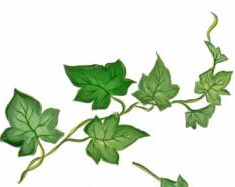 Ephemeral
Coasts
Ephemeral
CoastsNavigating the site:
"The Enduring Sea."
“Once this rocky coast beneath me was a plain of sand; then the sea rose and found a new shore line.”Rachel Carson, The Edge of the Sea, p. 249-250.
"And so in my mind's eye these coastal forms merge and blend ..."
 Gooseneck barnacles feeding.
Gooseneck barnacles feeding.
"Hearing the rising tide, I think how it is pressing also against other shores I know –rising on a southern beach where there is no fog, but a moon edging all the waves with silver and touching the wet sands with lambent sheen, and on a still more distant shore sending its streaming currents against the moonlit pinnacles and the dark caves of coral rock." So concluded Rachel Carson in tying the astronomical movements of the moon, earth and sun to the simple shore on which she stands, suspended in time between the water and the wind contemplating the fleeting quality of landscapes.
In case you miss it, Carson reiterates that the seashore represents "a shifting, kaleidoscope pattern in which there is no finality, no ultimate and fixed reality," because as she observes at the sea's edge we see "earth becoming fluid as the sea itself."
(p.250)
Carson captures the paradox of the sea as both mother and devouring leviathan of souls when she writes, " On all theses shores there are echoes of past and future: of the flow of time, obliterating yet containing all that has gone before; of the seas eternal rhythms --the tides, the beat of the surf, the pressing rivers of currents-- shaping, changing, dominating, the stream of life, flowing as inexorably as any ocean current, from the past to unknown future."
She informs us in conclusion that:
- A. the past confines the future
- B. we are the recycling remnants of past creatures and ecosystems
- C. food production depends on the sun, the sea, rivers and nutrients
- D. procreation is both a process of individuals and places in which they thrive
- E. clean water and air are necessary for wildlife and fisheries that are signals of healthy ecological systems
And she finally challenges us by "Contemplating the teeming life of the shore, we have an uneasy sense of the communication of some universal truth that lies just beyond our grasp." Like the salp slipping out of the small child's hands as she reaches for it squirming back into the sea, Carson shows us how beyond us the lives in this enduring sea actually are.
For Carson asks "And what is the meaning of so tiny a being as the transparent wisp of protoplasm that is the sea lace, existing for some reason inscrutable to us. . . . The meaning haunts and ever eludes us. . . ."
Edge of the Sea, pp. 249-250.
 "And so we
come to perceive life as a force as tangible as any of the physical
realities of the sea, a force strong and purposeful, as incapable of
being crushed or diverted from its ends as the rising tide."
"And so we
come to perceive life as a force as tangible as any of the physical
realities of the sea, a force strong and purposeful, as incapable of
being crushed or diverted from its ends as the rising tide."
Rachel Carson
![]()
Concept, related ideas.
Essay about conserving biological wealth.
Trace elements can have more than trace effects!
Protection of the global commons.
Science Index | Site Analysis | Population Index | Global Warming Index | Nature Index

